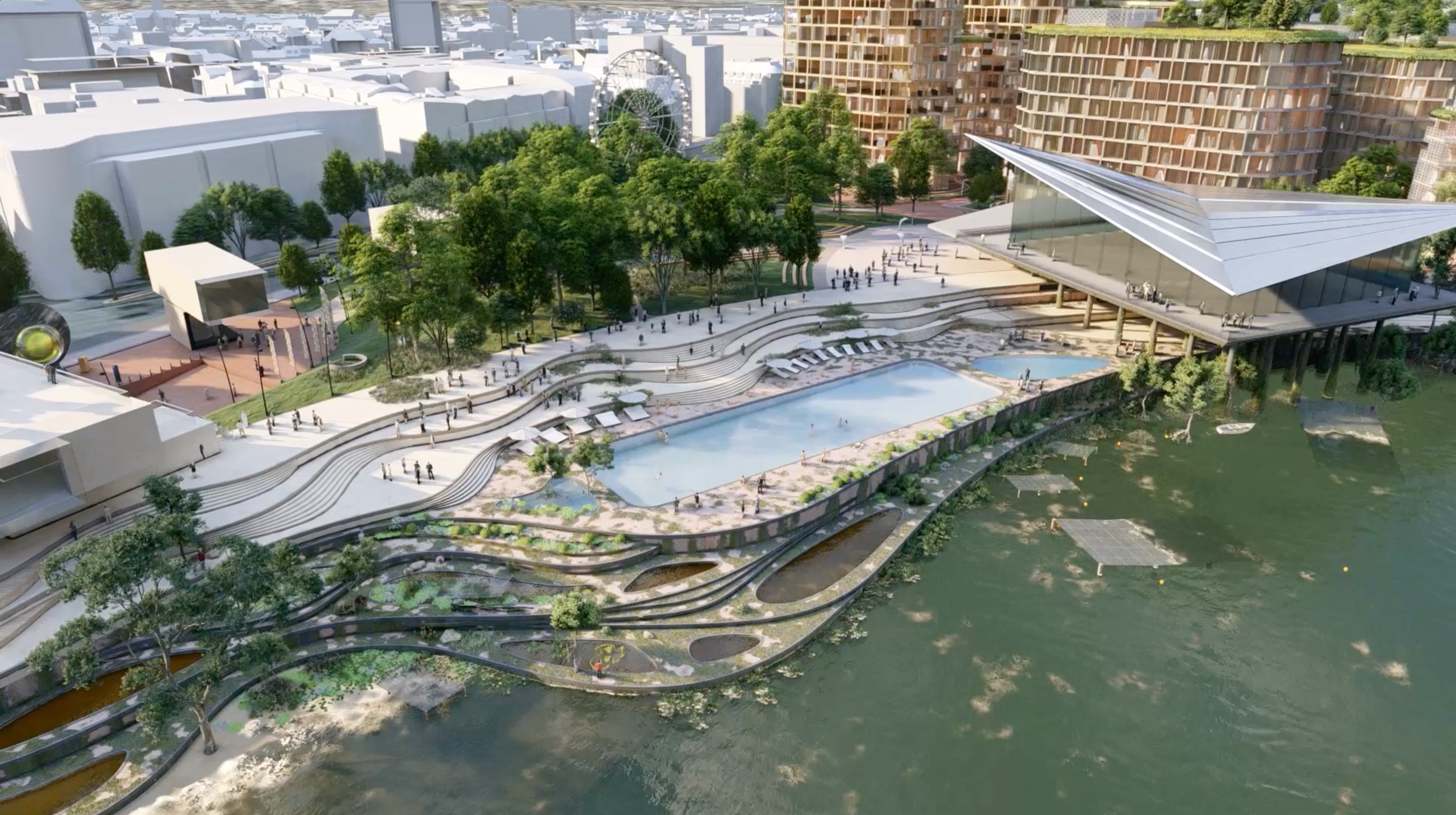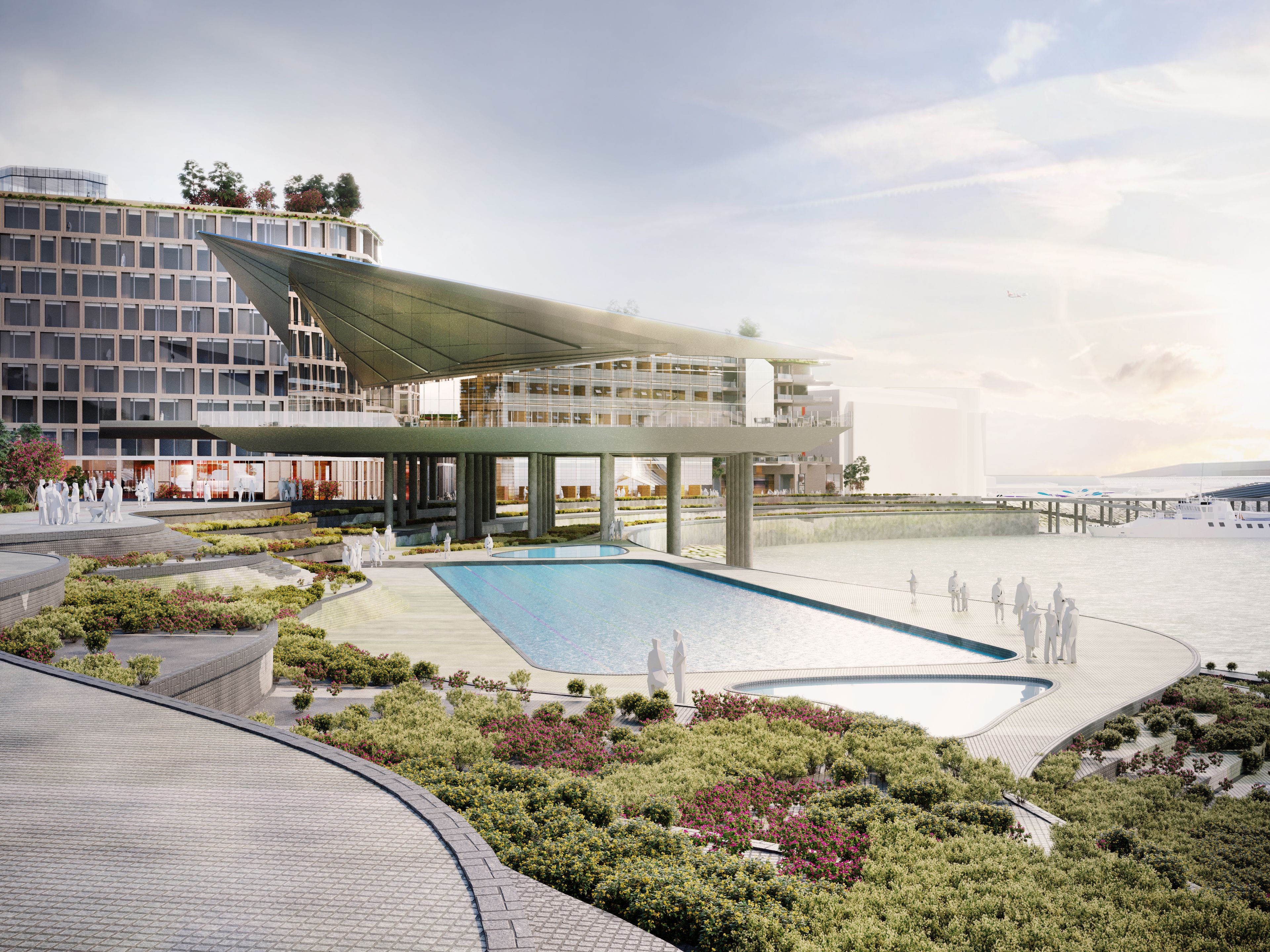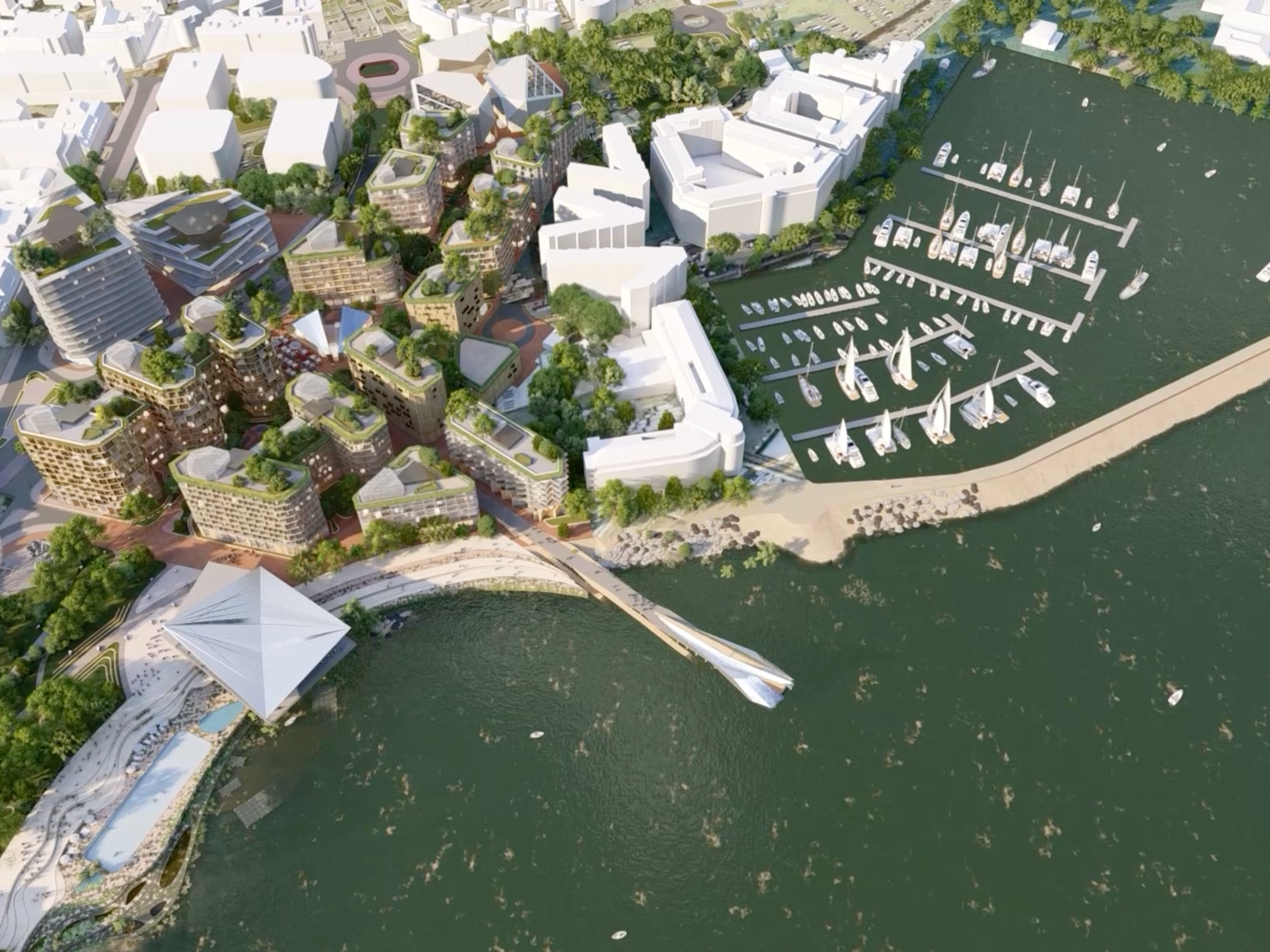Living with the elements: interview with Simon Grimbley, Uncommon Land

Simon Grimbley
Director at Uncommon Land
On Jersey’s southern coastline lies its historic capital, St Helier. The picturesque townscape, with roots in the medieval era, is separated from the sea by a strip of reclaimed land, formerly earmarked for shipbuilding and currently dominated by leisure boxes in surface car parks. Layers of deterrents, such as the six-lane traffic on the Esplanade, sever the coast from the town, making the coastline a peripheral and seemingly distant place.
Make and landscape architect Uncommon Land saw the opportunity to reimagine the waterfront and create a new frontier where town meets sea. Instead of a place apart, the transformed coastal strip will become an integral part of St Helier, imbued with the traditions and culture of the island – a place to retreat, restore and live with the elements.
This vision requires a shift in approach, achieved through a bigger-picture perspective and a people-centric placemaking agenda rooted in the local context. Simon Grimbley, Director at Uncommon Land, emphasises the need to look beyond red-line boundaries: “This project is not just about creating a new place; it explores how we can stitch together the proposed development with the historic town centre by strengthening existing connections and making new ones. The landscape plays a really important part in shaping the masterplan.”
Swathes of coastal planting permeate the scheme – green fingers that extend along revived historic streets and predicted key desire lines into the town centre. Both Route de la Liberation and the Esplanade will be transformed from multi-lane urban motorways into biodiverse green boulevards, lined with wildlife-friendly planting and dedicated areas for cycling and walking. Generous at-grade crossings for pedestrians will encourage traffic to slow and give way, while an upgraded underpass will make the subway route more welcoming.

Coastal planting along predicted key desire lines into the town centre.

Expansive greenery with wildlife-friendly planting.
A green spine weaves its way through the new coastal neighbourhood, from Les Jardins de la Mer to the newly proposed Fountain Plaza, stringing together a sequence of unique open spaces and local amenities that define smaller communities within the whole. The patchwork of landscapes will be playful and functional, designed to encourage a diverse and multigenerational community to connect through nature.
“The idea was to make the spine a performative and multipurpose landscape, introducing a softer space with a different character from the more urban ‘stitches’ that connect with the town centre,” says Simon. “The integrated community functions and residential front gardens create an inclusive space where people can socialise from their doorstep and interact with neighbours.” Greening and growing initiatives will provide opportunities for hyperlocal food production, with produce sold at local markets, while native plant species will support urban wildlife. A number of sustainable drainage solutions such as bioswales are integrated into the landscape design to reduce the risk of flooding from development, manage water quality, and boost biodiversity by creating new wildlife corridors.
St Helier’s coastline is exposed to Atlantic Ocean weather systems, and shaped by dramatic tidal shifts that change the landscape over the day and the seasons. At low tide, expansive beaches are revealed, as well as the causeway to the scenic Elizabeth Castle tidal island. Existing sea defences create a fortified condition to protect from flooding during storms, high tides and heavy rainfall, but there is widespread concern that climate change will increase the flood risk, result in water shortages, and cause the loss of terrestrial, coastal and marine ecosystems.

Stepped profile that works in sync with the shifting tide.
Simon points out that “sea walls don’t have to be big defensive walls.” Instead, a stepped profile will create a set of manmade ‘ecology terraces’ and rockpools that are flooded or exposed with the shifting tide, nurturing the rich and unique intertidal ecosystems of the basin. “You always find this richness in ecology and biodiversity where you have this edge condition,” Simon explains. “The idea is that the rockpools could function as habitats. The tide comes in, fills up the pools and then recedes to leave behind all this different marine fauna.” As such, the pools could become a focal point for school fieldtrips or marine researchers. During low tide, when the terraces dry up, they can function as informal social seating and an amphitheatre for temporary events while improving access to the beach.
This innovative approach to flood defence – created to respond to seasonal changes, rising sea levels and climatic shifts – will establish a more dynamic coastal landscape resilient to a rapidly changing reality. Together with a new boardwalk and pier, the coastal remodelling could activate the sea edge and bring new life back to this distant place.
Authors
Simon Grimbley is an award-winning landscape architect and urban designer with more than 20 years of experience at leading UK design practices. He’s responsible for the creative direction of Uncommon Land’s projects across a variety of sectors, with particular experience in high-value, complex projects that connect people with nature and create elevated human experiences.







